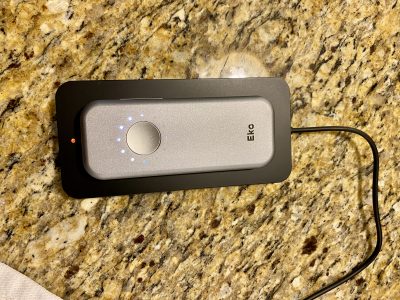It’s over, and having fun in Vegas trumped blogging. So, now that we’re home safe and sound, here’s some other things I learned / reinforced while there:
- we’re state-of-the-art with our procedural sedation where I work. Good news.
- for crashing patients, get the sono to the bedside, and think about dissection as a cause early
- trendelenberg position doesn’t improve BP, and should be abandoned unless trying to start a central line
- shock for fib, then do CPR without checking for ROSC for 2 minutes (big change)
- GERD flare-ups and cardiac ischemia are often linked! (Weird but true)
- soon, the 64 detector CT will do away with diagnostic caths (but not yet)
- morphine is not helpful for decompensated CHF (dCHF); no appreciable venodilation
- morphine is, however, a significant risk factor for needing to intubate in dCHF (5x)
- BiPap and Cpap are equivalent for dCHF, and getting them started early is the key
- Brugada syndrome is more prevalent than previously thought: look for it in your syncopal patients
- add colchicine to aspirin for your pericarditis patients
- things to avoid in pericarditis: indocin and steroids
A fun time was had by all, and it was a good, if sparsely-attended conference with very good speakers.
Now to start incorporating this into my practice…



Hey Gruntdoc!
I am an ER RN, traveler, currently on assignment in San Francisco. I am also formerly an HM2. I was a SAR Corpsman with 1st MAW in Iwakuni and then during the first Gulf War I went between the USNS Mercy and Mag 16 in Saudi. So I have a little bit of green running thru my veins.
I’ve been reading your blog for about 2 weeks now, having found it when a friend sent me the link to the UAB nurses rap video. Hilarious by the way. I read todays blog about the ACEP convention and I hope some of the lessons you listed today get passed on to the other Docs that werent there– especially using BiPap early for CHF’ers. Its a great thing. I’ve seen it work countless times but its still almost as bad as asking for Inapsine!
Keep up the good work shipmate!
This is a nice blog. Thanks for creating it. You might like ours.
re: shock for fib, then do CPR without checking for ROSC for 2 minutes (big change)
As a rookie EMT, it looks like I need to get my arms in better shape.
Do you have info on this? Seems weird to jump up and down on their heart if circulation is back.
The 64-slice CT may do away with the diagnostic cath but it certaintly can’t put a stent in…
MUSC is doing some seminars with the technology (I think–at least I’ve seen signs around the hospital).
The prospect of being a cath jockey for a living appeals to me on some days. On others it doesn’t. Hope the radiologists don’t steal my potential livelihood. ;-)
Jeremy –
Some 64 slice CT cor angios are being interpreted by cardiologists, not radiologists. This is an area of HUGE turf wars.
I was at ACC in Atlanta last month and went to a lecture re: CT cor angio. A case study was presented where a woman had essentially normal cors; the presenter asked the audience to identify the abnormality seen on the scan – no one guessed right.
The woman had a breast mass that turned out to be adeno CA.
After attending that lecture, if I were a cardiologist, I’d
be very reluctant to take on the liability of interpreting a CT scan.
And you are right about the CT not being able to do a stent.
We are cathing a pt this week who had CT done – he has significant calcification, so his lesions may not be amenable to PCI, but he still needs a cath despite the CT.
Where I think CT will become useful is in the ED where it can be used for pts w/ “atypical” chest pain. Cardiac chest pain, as GruntDoc has pointed out, can frequently be “atypical”.